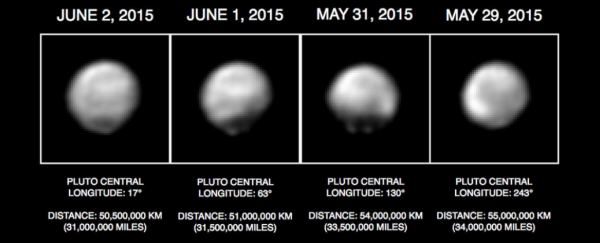After a journey spanning nine years and almost 5 billion kilometres, NASA's New Horizons spacecraft is closer than ever to everyone's favourite former planet, Pluto. On 14 July 2015, New Horizons is expected to fly within 12,000 km of the lonely cosmic body - about the distance between Seattle and Sydney - zooming through the orbits of its five tiny moons.
It will take the opportunity to image and examine the icy surface of Pluto in more detail than ever before, which is huge, because right now, all we have to go off is a frustratingly pixelated image of a small white blob. Soon we'll know what colour the surface is, how pocked and hilly it's become through billions of years of cosmic collisions, and perhaps even whether or not it's harbouring - or once harboured - the molecules needed to harbour life.
"We're going to turn a point of light into a planet and its moons overnight in the next month," principal investigator Alan Stern of the Southwest Research Institute in the US told the press last week, adding that nothing like this has been achieved since NASA's Voyager 2 flyby of Neptune in 1989.
Right now, the spacecraft is closer to Pluto than we are to Venus, our closest neighbour in the Solar System, after launching from Cape Canaveral, Florida in 2006 and costing US$700 million to build and maintain. According to Marcia Dunn at Phys.org, New Horizons has been taking pictures of Pluto since January, and last weekend, flight controllers activated its thrusters to steer it into its final path towards Pluto.
"The latest pictures, taken at the end of May and beginning of June, show large dark regions toward the bottom of Pluto," says Dunn. "Scientists are eager to learn the size and shape of these dark spots, as well as their exact location. Images will keep improving with every step closer to Pluto."
To mark the occasion, the US National Space Society commissioned the stunning teaser video below to get us well and truly amped up. Mark your calendars for July 14, because this is going to be epic.
"We're going to write the textbook. We know very little about the Pluto system now," said Stern. "It's really a mission of raw exploration, flying into the unknown to see what's there."

